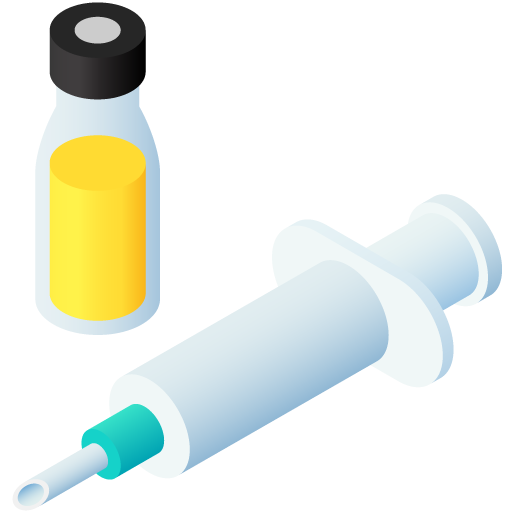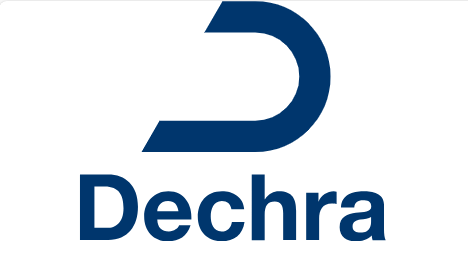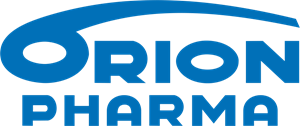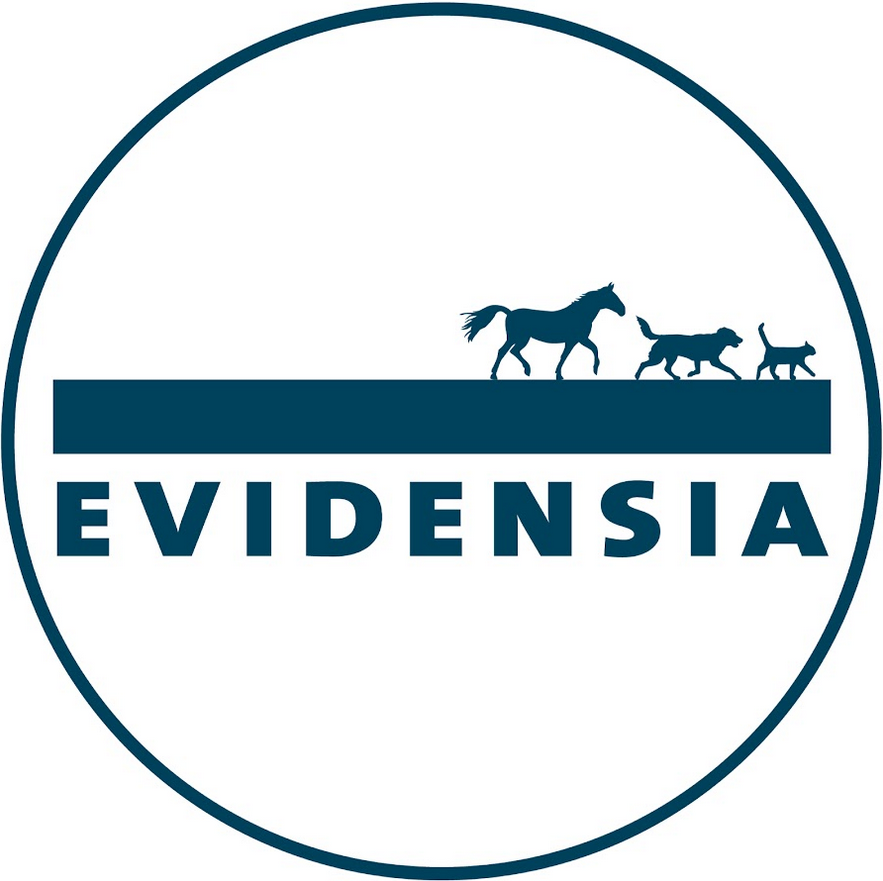Domosedan vet.
Active substance
ATC code
Species
Horses and cattle.
Indications
Sedation and analgesia in horses and cattle during various examinations and treatments, and in situations where handling of animals will be facilitated by administration of the veterinary medicinal product. For premedication before administration of injectable or inhalation anaesthetics.
Dose to be administered and administration route
Intramuscular or intravenous use.
To be administered intramuscularly or by slow intravenous injection of detomidine hydrochloride at a dose of 10–80 µg/kg depending on the degree and duration of sedation and analgesia required. The effect is more rapid after intravenous administration. To ensure a correct dosage, body weight should be determined as accurately as possible.
Single use (horses and cattle)
|
Dose |
Effect |
Duration of effect (h) |
Other effects |
|
|
ml/100 k g |
µg/kg |
|||
|
0.1–0.2 |
10–20 |
Sedation |
0.5–1 |
|
|
0.2–0.4 |
20–40 |
Sedation and analgesia |
0.5–1 |
Slight staggering |
|
0.4–0.8 |
40–80 |
Deeper sedation and better analgesia |
0.5–2 |
Staggering, sweating, piloerection, muscular tremors |
The onset of action occurs 2–5 min after IV injection. The full effect is seen 10– 15 min after IV injection. If necessary, detomidine hydrochloride can be administered up to a total dose of 80 µg/kg.
The following dosing instructions show different possibilities for the combination of detomidine hydrochloride. However, the simultaneous administration with other drugs should always be based on a benefit/risk assessment by the responsible veterinarian and it must be done taking into account the SPC of the relevant products.
Combinations with detomidine to increase sedation or analgesia in a standing horse
Detomidine hydrochloride 10–30 µg/kg IV in combination with either
|
•butorphanol |
0.025–0.05 mg/kg IV |
or |
|
•levomethadone |
0.05–0.1 mg/kg IV |
or |
|
•acepromazine |
0.02–0.05 mg/kg IV |
Combinations with detomidine to increase sedation or analgesia in cattle
Detomidine hydrochloride 10-30 µg/kg IV in combination with
| •butorphanol | 0.05 mg/kg IV |
Combinations with detomidine for preanaesthetic sedation in the horse
The following anaesthetics can be used after detomidine hydrochloride premedication (10–20 µg/kg) to achieve lateral recumbency and general anaesthesia:
|
•ketamine |
2.2 mg/kg IV or |
|
•thiopental |
3–6 mg/kg IV or |
•guaifenesin IV (to effect) followed by ketamine 2.2 mg/kg IV
Administer the veterinary medicinal products prior to ketamine and allow sufficient time for sedation to develop (5 minutes). Ketamine and the veterinary medicinal product must therefore never be administered simultaneously in the same syringe. Combinations with detomidine and inhalation anaesthetics in the horse
Detomidine hydrochloride can be used as sedative premedicant (10–30 µg/kg) before induction and maintenance of inhalation anaesthesia. Inhalation anaesthetic is given to effect. The amount of inhalation anaesthetics required is significantly reduced by premedication with detomidine.
Combination with detomidine to maintain injection anaesthesia (total intravenous anaesthesia TIVA) in the horse
Detomidine can be used in combination with ketamine and guaifenesin for maintaining total intravenous anaesthesia (TIVA).
The best-documented solution contains guaifenesin 50–100 mg/ml, detomidine hydrochloride 20 µg/ml and ketamine 2 mg/ml. 1 g ketamine and 10 mg detomidine hydrochloride are added to 500 ml of 5–10 % guaifenesin; anaesthesia is maintained by an infusion of 1 ml/kg/h.
Combinations with detomidine for induction and maintenance of general anaesthesia in cattle
Detomidine hydrochloride 20 µg/kg (0.2 ml/100 kg) with
•ketamine 0.5–1 mg/kg IV, IM or
•thiopental 6–10 mg/kg IV
The effect of detomidine-ketamine lasts for 20–30 minutes, and the effect of detomidine- thiopental for 10–20 minutes.
Adverse reactions
Cattle
|
Very common (> 1 animal / 10 animals treated): |
Bradycardia, Hypertension (transient), Hypotension (transient) Hyperglycaemia Urination1 Penile prolapse (transient)2 |
|
Common (1 to 10 animals / 100 animals treated): |
Ruminal tympany3, Hypersalivation (transient) Ataxia, Muscle tremor Uterine contraction Nasal discharge4, Respiratory depression (slight)5 Hyperthermia, Hypothermia |
|
Rare (1 to 10 animals / 10,000 animals treated): |
Arrhythmia6 Increased sweating (transient) |
|
Very rare |
Excitation |
|
(< 1 animal / 10,000 animals treated, including isolated reports): |
Heart block7 Hyperventilation (slight)8 |
1 A diuretic effect may be observed 45 to 60 minutes after treatment.
2 A partial, penis prolapse can occur.
3 Substances of this class inhibit ruminal and intestinal motility. Can cause a mild bloat in cattle.
4 Mucus discharge from the nose may be seen because of continued lowering of the head during sedation.
5,8 Causes changes in the respiratory rate.
6,7 Causes changes in the conductivity of cardiac muscle as evidenced by partial atrioventricular and sinoatrial blocks.
Horses
|
Very common (> 1 animal / 10 animals treated): |
Arrhythmia[1], Bradycardia, Heart block2, Hypertension (transient), Hypotension (transient) Hyperglycaemia Ataxia, Muscle tremor Urination[2] Penile prolapse (transient)[3], Uterine contraction Increased sweating (transient), Piloerection Hyperthermia, Hypothermia |
|
Common (1 to 10 animals / 100 animals treated): |
Hypersalivation (transient) Nasal discharge[4] Skin swelling6 |
|
Rare (1 to 10 animals / 10,000 animals treated): |
Colic7 Urticaria Hyperventilation, Respiratory depression |
|
Very rare (< 1 animal / 10,000 animals treated, including isolated reports): |
Excitation Hypersensitivity reaction |
7 Substances of this class inhibit intestinal motility.
Mild adverse reactions have reportedly resolved uneventfully without treatment.
Adverse reactions should be treated symptomatically.
Reporting adverse events is important. It allows continuous safety monitoring of a veterinary medicinal product. Reports should be sent, preferably via a veterinarian, to either the marketing authorisation holder or its local representative or the national competent authority via the national reporting system. See the package leaflet for respective contact details.
Dispensing
POM-V - Prescription Only Medicine – VeterinarianSUMMARY OF PRODUCT CHARACTERISTICS
1. NAME OF THE VETERINARY MEDICINAL PRODUCT
DOMOSEDAN 10 mg/ml Solution for Injection
2. QUALITATIVE AND QUANTITATIVE COMPOSITION
Active ingredient:
Detomidine hydrochloride 10 mg/ml
Excipients:
Methyl parahydroxybenzoate (E 218) 1 mg/ml
For the full list of excipients, see Section 6.1.
3. PHARMACEUTICAL FORM
Solution for Injection
Clear, colourless solution
4. CLINICAL PARTICULARS
4.1 Target Species
Horses.
4.2 Indications for Use, Specifying the Target Species
A sedative with analgesic properties used to facilitate handling of horses for examination, minor surgical interventions and other manipulations. It can be used with or without butorphanol.
The product is also indicated for use with ketamine for short duration general anaesthesia to carry out surgical procedures such as castration.
4.3 Contraindications
1. Do not use in conjunction with sympathomimetic amines or with intravenous potentiated sulphonamides.
2. Do not administer simultaneously with ketamine in the same syringe (see sections 4.8 and 4.9).
3. Do not use the butorphanol combination in horses suffering from colic.
4. Do not use in seriously ill animals with heart failure or impaired liver or kidney function.
5. Do not use in case of hypersensitivity to the active substance or to any of the excipients.
6. Do not administer to horses in the last month of pregnancy
4.4 Special warnings for each target species
None
4.5 Special precautions for use
i. Special precautions for use in animals
The product should not be used in horses with pre-existing AV blocks, with severe cardiac insufficiency, respiratory disease or chronic renal failure.
Careful consideration should be given prior to administration to animals in shock and to animals with liver or kidney disease.
Intravenous administration should be slow.
It is recommended that feed should be withheld for at least 12 hours prior to anaesthesia.
The horse should not be given water or feed before the drug effect has passed.
Routine safety measures should be employed to protect practitioners and handlers.
ii. Special precautions to be taken by the person administering the veterinary medicinal product to animals
In the case of accidental oral intake or self-injection, seek medical advice immediately and show the package leaflet to the doctor but DO NOT DRIVE as sedation and changes in blood pressure may occur.
Avoid skin, eye or mucosal contact.
Immediately after exposure, wash the exposed skin with large amounts of fresh water.
Remove contaminated clothes that are in direct contact with skin.
In the case of accidental contact of the product with eyes, rinse with large amounts of fresh water. If symptoms occur, seek the advice of a doctor.
If pregnant women handle the product, special caution should be observed not to self inject as uterine contractions and decreased foetal blood pressure may occur after accidental systemic exposure.
Advice to the Doctor:
Detomidine hydrochloride is an alpha-2 adrenoreceptor agonist. Symptoms after absorption may involve clinical effects including dosedependent sedation, respiratory depression, bradycardia, hypotension, a dry mouth, and hyperglycaemia. Ventricular arrhythmias have also been reported. Respiratory and haemodynamic symptoms should be treated symptomatically.
4.6 Adverse reactions (frequency and seriousness)
Adverse reactions are very rare
All alpha-2 adrenoceptor agonists, including detomidine, may cause decreased heart rate, changes in the conductivity of cardiac muscle (as evidenced by partial atrioventricular and sinoatrial blocks), changes in the respiratory rate, incoordination/ataxia and sweating.
A diuretic effect is usually observed within 45 to 60 minutes after treatment.
The potential for isolated cases of hypersensitivity exists, including paradoxical response (excitation).
Partial, transient penis prolapse may occur in male horses. In rare cases, horses may show signs of mild colic following administration of alpha-2 adrenoceptor agonists because substances of this class inhibit intestinal motility.
Occasional reports of urticaria have been received.
Mild adverse reactions have reportedly resolved without treatment. Severe reactions should be treated symptomatically.
The frequency of adverse reactions is defined using the following convention: - very common (more than 1 in 10 animals displaying adverse reaction(s) during the course of one treatment)
- common (more than 1 but less than 10 animals in 100 animals)
- uncommon (more than 1 but less than 10 animals in 1,000 animals )
- rare (more than 1 but less than 10 animals in 10,000 animals)
- very rare (less than 1 animal in 10,000 animals, including isolated reports)’
4.7 Use during pregnancy, lactation or lay
Not to be used in mares in the last month of pregnancy.
No studies have been conducted in mares; however trace amounts of detomidine have been detected in the milk of cows treated with the product.
.
The safety of the product has not been investigated in breeding horses; use only according to benefit/risk assessment during the other months of pregnancy
4.8 Interaction with other medicinal products and other forms of interaction
Use with care with other sedatives and anaesthetics because of an additive/synergistic effect.
Where appropriate the product may be used in conjunction with local anaesthetic agents.
Induction of anaesthesia with detomidine and ketamine has been used prior to maintenance with halothane. Because of the nature of the induction agents, the effects of halothane may be delayed and special care must be taken to avoid over-dosage.
When detomidine is used as a premedication prior to general anaesthesia, the product may delay onset of induction.
Use in conjunction with sympathomimetic amines and intravenous potentiated sulphonamides is contra-indicated.
4.9 Amounts to be administered and administration route
The following procedures are recommended. Use two sterile needles, one to fill the syringe from the bottle and one to inject the patient. Once the required dose has been withdrawn from the vial, the syringe should be removed from the needle. A separate sterile needle should be inserted into the injection site and the syringe connected to it. The needles should be discarded.
The product alone
To be administered intramuscularly or by slow intravenous injection at a concentration of 10-80 µg detomidine / kg bodyweight depending on the degree of sedation required.
Detomidine/butorphanol combination
Dosage: 0.1 ml product/100 kg (10 µg/kg detomidine hydrochloride) intravenously, followed within 5 minutes by a dose rate in the region of 25µg/kg butorphanol, intravenously. Clinical experience has shown that 5mg detomidine and 10mg butorphanol affords effective, safe sedation in horses above 200 kg bodyweight.
Detomidine/ketamine combination (short duration anaesthesia)
Ketamine must not be used as the sole anaesthetic agent in horses. It is always necessary to administer detomidine prior to ketamine and to allow sufficient time (5 minutes) for sedation to develop. The two agents must therefore never be administered simultaneously in the same syringe. It is important that, to obtain satisfactory surgical anaesthesia the following procedure is followed:
Administer the product at a dose rate of 20 µg/kg by slow intravenous injection.
Allow 5 minutes for the horse to become deeply sedated then administer
ketamine at a dose rate of 2.2 mg/kg as an intravenous bolus.
Onset of anaesthesia is gradual, the horse taking approximately 1 minute to become recumbent. In large fit horses recumbency may take up to 3 minutes. Anaesthesia will continue to deepen for a further 1-2 minutes and during this time the horse should be left quietly. Horses regain sternal recumbency approximately 20 minutes post ketamine administration.
The duration of surgical anaesthesia is approximately 10-15 minutes and if for any reason it is necessary to prolong anaesthesia, thiopentone sodium can be administered intravenously in boluses of 1 mg/kg as required. Total doses of 5 mg/kg increments have been given. Total doses greater than this may reduce the quality of recovery.
Thiopentone can also be administered (as above regime) if sufficient depth of anaesthesia is not achieved.
The horse should be allowed to stand in its own time. The horse may be ataxic if it stands prematurely and therefore it should be encouraged to remain recumbent.
To facilitate handling and the administration of the induction agents, some horses have received acepromazine by intramuscular injection at a dose rate of 0.03 mg/kg at least 45 minutes before induction of anaesthesia.
Excitable horses are sometimes poor subjects for anaesthesia. It is a prime requisite that the horse should be quietly and carefully handled during the administration of the anaesthetic agents so as to ensure the minimum amount of upset during the induction period. If the horse fails to become sedated following the injection of the product, then ketamine should not be injected and the anaesthesia procedure should be abandoned.
4.10 Overdose (symptoms, emergency procedures, antidotes), if necessary
Overdose may cause cardiac arrhythmia, hypotension, delayed recovery, and deep depression of the central nervous system and the respiratory system’.. If recovery is delayed, it should be ensured that the animal can recover in a quiet and warm place. An oxygen supplement may be indicated in circulatory and respiratory depression.
In cases of overdose, or should the effects become life-threatening, an alpha2 antagonist (atipamezole) is recommended (5-10times the dose of detomidine in µg/kg).
AV blocks may be prevented by IV administration of atropine at 0.005 - 0.02 mg/kg. Atropine raises the heart rate but may cause arrhythmias and should be used with caution.
4.11 Withdrawal Period
Horses (meat and offal): 1 Day.
5. PHARMACOLOGICAL PROPERTIES
Pharmacotherapeutic group: sedative and analgesic
ATC Vet Code: QN05CM90
5.1 Pharmacodynamic properties
Detomidine is a sedative with analgesic properties (alpha-2 adrenoceptor agonist) which can be used to facilitate handling of horses for examination, minor surgical interventions and other manipulations.
5.2 Pharmacokinetic particulars
Detomidine is rapidly and completely absorbed after intramuscular injection.
The rapid distribution to tissues is followed by almost complete metabolism. The metabolites are mainly excreted in urine and faeces.
6. PHARMACEUTICAL PARTICULARS
6.1 List of excipients
Methyl parahydroxybenzoate (E218)
Sodium Chloride
Water for injections
6.2 Major incompatibilities
Not to be mixed with other products.
6.3 Shelf-life
Shelf-life of the veterinary medicinal product as packaged for sale: 3 years. Shelf-life after first opening the immediate packaging: 3 months.
6.4 Special Precautions for Storage
Do not refrigerate or freeze.
Keep vials in outer carton.
This veterinary medicinal product does not require any special storage conditions.
6.5 Nature and composition of immediate packaging
a) Pack sizes: 5 ml and 20 ml
b) Containers: colourless glass type I Vial
c) Closures: red rubber chlorobutyl bung with aluminium overseal
6.6 Special precautions for the disposal of unused veterinary medicinal products or waste materials derived from the use of such products, if appropriate
Any unused veterinary medicinal product or waste materials derived from such veterinary medicinal products should be disposed of in accordance with local requirements.
7. MARKETING AUTHORISATION HOLDER
Orion Corporation
Orionintie 1
02200 Espoo Finland
8. MARKETING AUTHORISATION NUMBER
Vm 06043/4002
9. DATE OF THE FIRST AUTHORISATION
13 February 1985
10. DATE OF REVISION OF THE TEXT
June 2020 
Approved: 26 June 2020

| Art. Nr. | 06043/4002 |
|---|---|
| EAN | 5012674902097 |
 TRUSTED SOURCE
TRUSTED SOURCE








